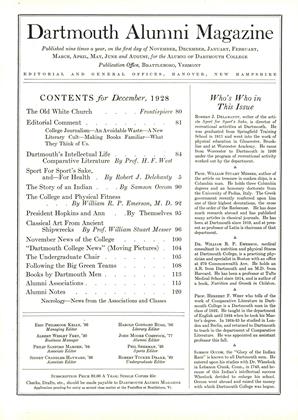By Eric P. Kelly, 1906. New York: The Mac- millan Company, 1928.
High in the tower of the Church of Our Lady Mary in Krakow a trumpeter still blows the Heynal, as it has been blown for more than seven centuries, to mark the passing of the hours. It is an incomplete Heynal, lacking four notes. But the trumpeters of Krakow always blow it that way because years ago—
The story is begun. A romantic imagination and a gift for story-telling, plus a love for Poland and for the pageantry and color of medieval life, have all gone into it. And who would not, if he could, write some such story given such a start from fact? When two years ago Mr. Kelly was Lektor in English at the University of Krakow, living within sound of the Heynal, he must have felt the imperious urge to do what he could with a story about that city and the music by which it marks its time. And he has made a vivid and exciting tale.
The time is during the reign of Casimir of the great Jagiello family, in the last half of the fifteenth century, when Poland was already a great nation, though there was no Russian Empire, but only Muscovy, no Prussia, even, but only the Teutonic Knights. Poland was prosperous and important, and especially important was her capital, Krakow. There was the second oldest university in Europe, and there was the meeting-place of European and Asian civilization, for in those days Krakow was all too close to Tartars and Muscovites, as later she was all too close to the Ottomans.
But Mr. Kelly's story is not political, or only dimly so. Ivan of Moscovy covets the Great Tarnov Crystal, a stone of great beauty and mysterious power, which is in the possession of the Polish family of Charnetski. By Ivan's agents they are driven to carry the crystal to Krakow, hoping to deliver it to King Casimir. The father and son become trumpeters of the Heynal, and eventually succeed in delivering their precious property to the king, but only after their home has been raided, after a large part of Krakow has been burned, and after the Heynal has once, at least, been played completely.
It is, as has been said, an exciting story, and children, to whom the publishers claim it is addressed, will no doubt find the action memorable. But older readers will probably feel with the author greater interest in the recreation he attempts of the medieval city and its life, its markets, its crooked streets, its superstition, its violence, its hunger for truth. Of this distant society and of a vital story he has made a fascinating blend.
 View Full Issue
View Full Issue
More From This Issue
-
 Article
ArticleAlumni Associations
December 1928 -
 Sports
SportsSport for Sport's Sake, and—for Health
December 1928 By Robert J. Delahanty -
 Lettter from the Editor
Lettter from the EditorEditorial Comment
December 1928 -
 Article
ArticleClassical Art From Ancient Shipwrecks
December 1928 By Professor William Stuart Messer -
 Article
ArticleThe College and Physical Fitness
December 1928 By William R.P.Emerson, M.D. -
 Class Notes
Class NotesCLASS OF 1921
December 1928 By Herrick Brown
Books
-
 Books
BooksAlumni Articles
DECEMBER 1967 -
 Books
BooksPINES OF JAALAM.
May 1929 By Allan Macdonald. -
 Books
BooksTHEORETICAL ISSUES IN INTERNATIONAL ECONOMICS.
OCTOBER 1967 By DANIEL MARX JR. '29 -
 Books
BooksSADDLING PEGASUS
JANUARY 1932 By F. Cudworth Flint -
 Books
BooksTelling Tales
APRIL 1978 By ROBERT H. ROSS '38 -
 Books
BooksCULTURE AND SOCIETY, AN INTRODUCTION TO SOCIOLOGY
October 1952 By Wayne C. Neely Andrew G. Truxal

